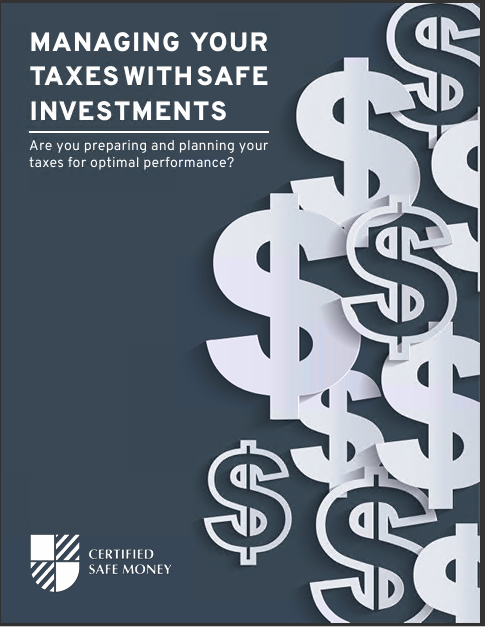Key Takeaways:
- Coordinating annuities and Social Security can maximize your retirement income and minimize your tax burden.
- Understanding how these income sources interact can help you create a tax-efficient retirement plan.
Annuities and Social Security: Creating a Tax-Friendly Retirement Plan
Planning for retirement requires careful consideration of various income sources, including annuities and Social Security. Coordinating these two sources can maximize your income and minimize your tax liability. This article will explore strategies to create a tax-friendly retirement plan by effectively integrating annuities and Social Security benefits.
Understanding Annuities and Social Security
What Are Annuities?
Annuities are financial products designed to provide a steady income stream, typically used for retirement. You can purchase an annuity with a lump sum or through a series of payments. In return, the insurance company pays you regular income, either immediately or at a future date. Annuities come in different forms, such as fixed, variable, and indexed, each with its own benefits and risks.
What Is Social Security?
Social Security is a federal program that provides retirement, disability, and survivor benefits. Most people become eligible for retirement benefits at age 62, but delaying benefits until full retirement age (or even later) can result in higher monthly payments. Social Security benefits are based on your highest 35 years of earnings and the age at which you start receiving benefits.
The Taxation of Annuities and Social Security
Annuities
The taxation of annuities depends on whether they are qualified or non-qualified:
- Qualified Annuities: Purchased with pre-tax dollars (e.g., through an IRA or 401(k)). Withdrawals are taxed as ordinary income.
- Non-Qualified Annuities: Purchased with after-tax dollars. Only the earnings portion of the withdrawals is taxed as ordinary income, while the principal is not taxed.
Social Security
Social Security benefits may be taxable, depending on your combined income (adjusted gross income + non-taxable interest + 50% of your Social Security benefits):
- Single Filers:
- Combined income below $25,000: Benefits are not taxed.
- Combined income between $25,000 and $34,000: Up to 50% of benefits may be taxable.
- Combined income above $34,000: Up to 85% of benefits may be taxable.
- Married Filing Jointly:
- Combined income below $32,000: Benefits are not taxed.
- Combined income between $32,000 and $44,000: Up to 50% of benefits may be taxable.
- Combined income above $44,000: Up to 85% of benefits may be taxable.
Strategies for Coordinating Annuities and Social Security
Timing Your Social Security Benefits
Delaying Social Security benefits can increase your monthly payments. If you can afford to delay benefits until full retirement age (FRA) or even until age 70, you can maximize your Social Security income. This strategy is particularly beneficial if you have other sources of income, such as annuities, to cover expenses in the meantime.
Utilizing Annuities for Income Bridging
Using annuities to bridge the income gap while delaying Social Security benefits can be an effective strategy. Immediate annuities can provide a steady income stream during the years you delay Social Security, allowing you to maximize your future benefits.
Consider the Tax Impact of Withdrawals
When coordinating annuities and Social Security, it’s essential to consider the tax impact of withdrawals:
- Minimize Taxable Income: Withdraw funds from non-qualified annuities first, as only the earnings are taxed. This strategy can help keep your combined income lower, reducing the taxability of Social Security benefits.
- Strategic Withdrawal Timing: Time your withdrawals in low-income years to minimize the tax impact. For example, consider withdrawing from annuities before RMDs (required minimum distributions) start at age 73 to avoid higher taxable income.
Use Roth Conversions
Converting traditional IRA or 401(k) funds into a Roth IRA before retirement can be a tax-efficient strategy. While you will pay taxes on the conversion, future withdrawals from the Roth IRA will be tax-free. This approach can reduce your taxable income in retirement, potentially lowering the taxability of your Social Security benefits.
Laddering Annuities
Laddering annuities involves purchasing multiple annuities with different start dates. This strategy can provide a more flexible and tax-efficient income stream. By staggering the annuity payouts, you can manage your income levels and tax liabilities more effectively.
Consider Qualified Longevity Annuity Contracts (QLACs)
A QLAC allows you to use a portion of your traditional IRA or 401(k) to purchase an annuity that starts payments at a later age (up to 85). This strategy can help reduce RMDs, lowering your taxable income and potentially reducing the taxability of Social Security benefits.
Coordinate with Other Income Sources
Consider how other sources of retirement income, such as pensions, dividends, and interest, interact with annuities and Social Security. Managing these income streams together can help optimize your overall tax situation.
Work with a Financial Advisor
A financial advisor can help you develop a comprehensive retirement plan that coordinates annuities and Social Security benefits. They can provide personalized strategies to maximize income and minimize taxes based on your unique financial situation.
Practical Applications of Tax-Efficient Strategies
Delaying Social Security
Delaying Social Security benefits is one of the most effective ways to maximize your retirement income. For each year you delay past your full retirement age, your benefit increases by approximately 8% until you reach age 70. This increase can provide a significant boost to your lifetime income, especially when coordinated with other retirement income sources like annuities.
Using Non-Qualified Annuities First
By drawing from non-qualified annuities first, you can control your taxable income more effectively. Since only the earnings portion of non-qualified annuity withdrawals is taxable, using these funds can help keep your combined income below the thresholds that trigger higher taxation of Social Security benefits.
Roth IRA Conversions
Converting traditional IRA or 401(k) funds to a Roth IRA can be particularly advantageous if you expect to be in a higher tax bracket in the future. While you will pay taxes on the conversion amount, future growth and withdrawals from the Roth IRA are tax-free, which can significantly reduce your taxable income in retirement.
Laddering Annuities for Flexibility
Laddering annuities involves purchasing several annuities that begin paying out at different times. This strategy can provide a steady and predictable income stream while allowing you to manage your tax liabilities. For example, you might purchase one annuity that starts payments immediately, another that starts in five years, and a third that begins in ten years. This approach helps you adjust your income according to your needs and tax situation.
Implementing QLACs
A Qualified Longevity Annuity Contract (QLAC) can be an effective tool to manage RMDs and reduce taxable income in the early years of retirement. By deferring part of your retirement savings into a QLAC, you can delay RMDs until as late as age 85, potentially lowering your tax burden during the initial years of retirement when other income sources might be higher.
Comprehensive Coordination
Coordinating all your retirement income sources, including annuities, Social Security, pensions, and investments, is crucial for a tax-efficient strategy. Understanding how each income stream interacts and affects your overall tax situation allows for better planning and optimization. A financial advisor can assist in creating a comprehensive plan tailored to your specific circumstances.
Avoiding Common Mistakes
Ignoring Tax Implications
Failing to consider the tax implications of withdrawals from annuities and other retirement accounts can lead to unexpected tax bills. Always plan your withdrawals with tax efficiency in mind.
Overlooking State Taxes
State tax laws vary, and some states tax retirement income differently. Ensure you understand how your state taxes annuities and Social Security benefits to avoid surprises.
Not Reviewing Your Plan Regularly
Regularly reviewing and adjusting your retirement plan is crucial to ensure it remains aligned with your goals and current tax laws. Life events, changes in income, and legislative updates can all impact your strategy.
Not Seeking Professional Advice
Professional guidance can make a significant difference in optimizing your retirement income and minimizing taxes. A financial advisor can provide personalized strategies and ensure your plan is comprehensive and effective.
Creating a Tax-Friendly Retirement Plan
Coordinating annuities and Social Security benefits can significantly impact your retirement income and tax liability. By understanding the interaction between these income sources and employing strategic planning, you can create a tax-friendly retirement plan that maximizes your financial security. Delaying Social Security, utilizing annuities for income bridging, considering the tax impact of withdrawals, and exploring Roth conversions and QLACs are all effective strategies to optimize your retirement income. Working with a financial advisor can provide personalized guidance and ensure that your plan aligns with your financial goals and circumstances.
Contact Information:
Email: dante@credkeeper.com
Phone: 8777993433
Bio:
After spending many years studying information technology, specializing in web development, digital marketing, and search engine optimization (SEO), I enjoy applying my skills and experience in helping others achieve their goals online.
As a marketing specialist at Credkeeper, I help people get the most out of their online reputation. Your prospects perform Internet searches for your name before they buy from you. What they see on the first page of Google outweighs almost all other marketing! What do people currently see when they search your name on the Internet?
If you would like to know more about Credkeeper and what we can do for you, feel free to reach out to me!













